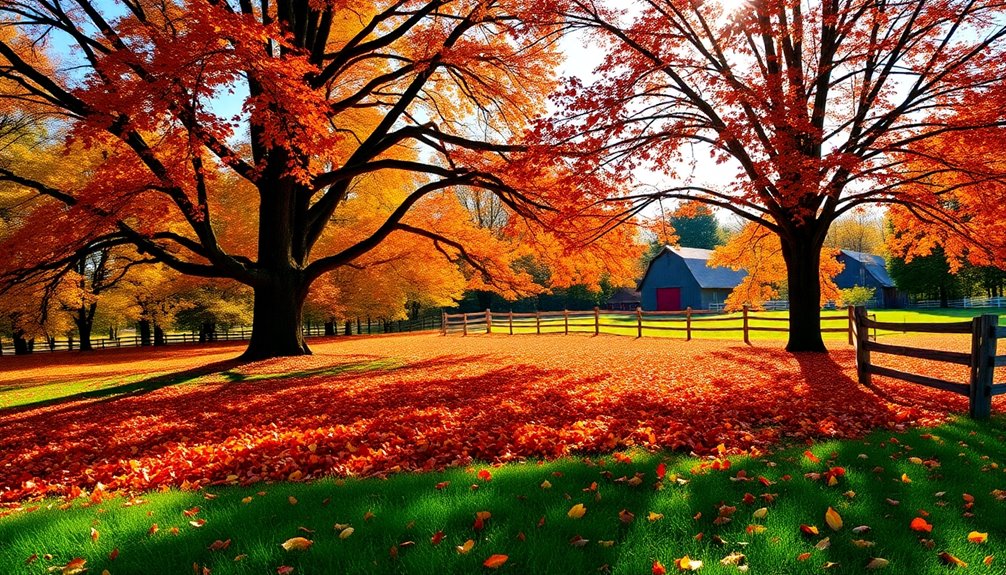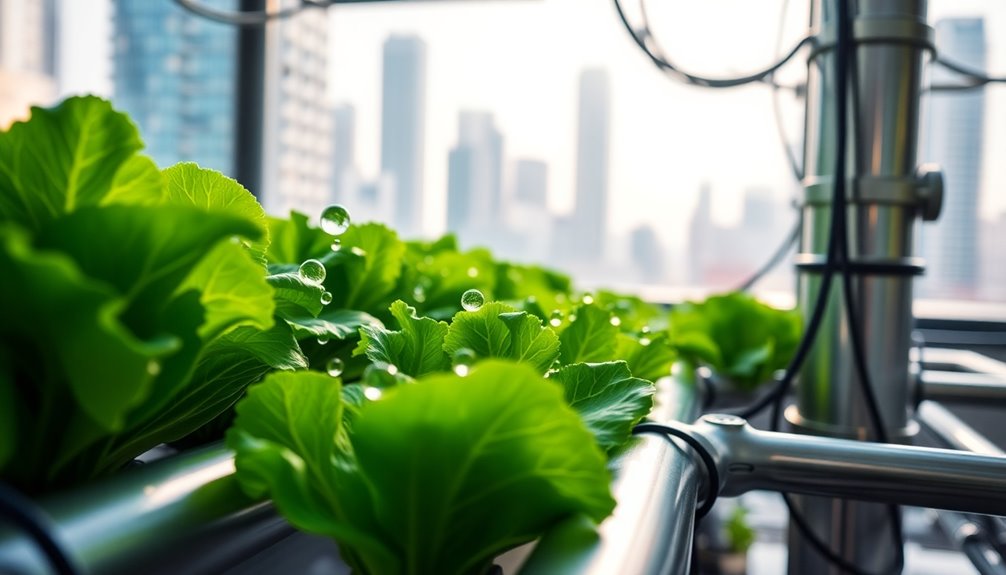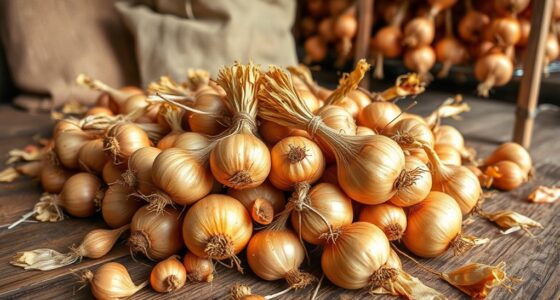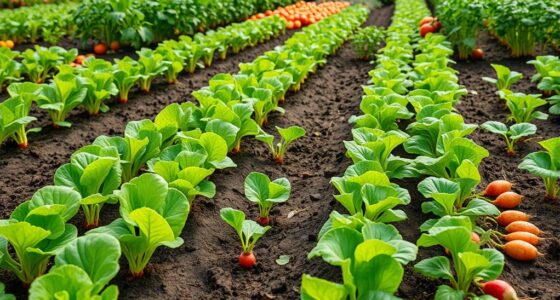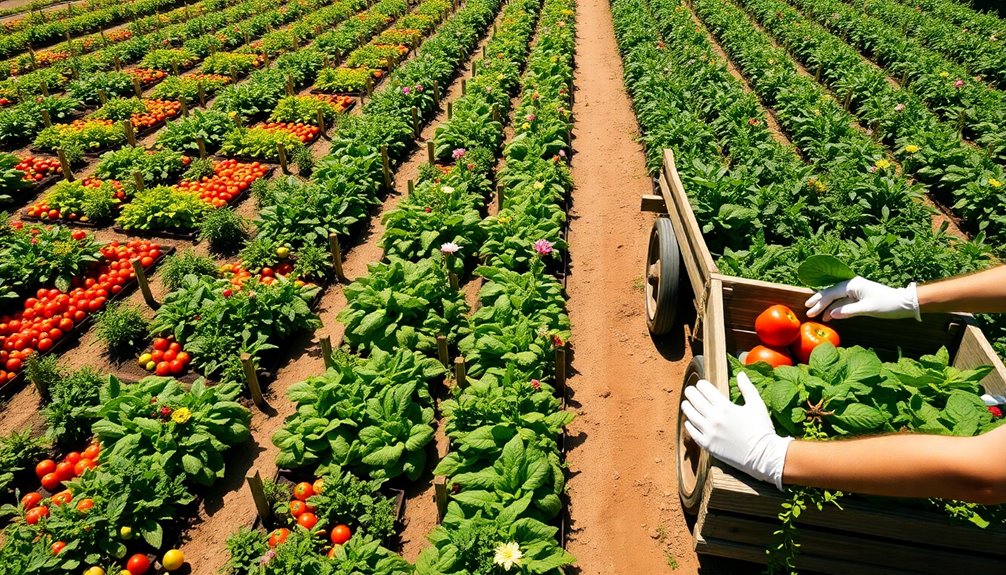Your farm transforms into a stunning palette of colors each autumn, and capturing this beauty is all about timing and technique. As leaves change, utilize the softer light of the golden hour to enhance their vibrancy. Consider experimenting with different angles and compositions—try backlighting leaves for a magical glow. Don't forget to pay attention to tree variety; diverse species create unique color contrasts. With the right equipment and a little creativity, you can showcase the stunning beauty of fall on your farm. Discover more tips to elevate your photography and make every shot a masterpiece.
Key Takeaways
- Capture fall colors during golden hour for warm, soft lighting that enhances the vibrancy of autumn leaves on your farm.
- Utilize polarizers to reduce glare and enhance the richness of leaf colors in your photographs.
- Experiment with different angles and compositions, incorporating foreground elements for depth and interest in your images.
- Keep an eye on local foliage reports to time your photography sessions for peak color displays on your farm.
- Explore various lighting conditions, such as overcast days, to create even illumination and reduce harsh shadows in your photos.
Understanding Leaf Color Change
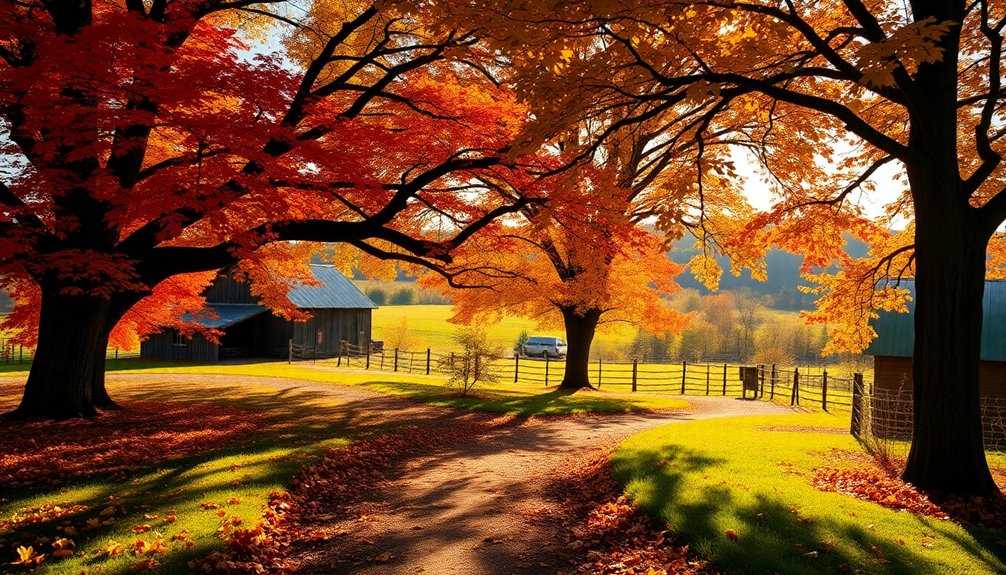
As autumn approaches, you may notice the vibrant transformation of leaves around you. This change starts with shorter days and cooler temperatures, signaling trees to halt their food-making process.
As chlorophyll breaks down, it reveals other pigments like carotenoids, which produce yellow and orange hues. Interestingly, anthocyanins form in cooler conditions, giving rise to bright reds. The loss of chlorophyll allows for nitrogen resorption, further influencing the leaf's color transformation.
The interplay between these pigments creates a stunning palette of colors, influenced by environmental factors like weather and water supply. Low temperatures enhance red pigment production, while rainy days can intensify fall colors.
Each tree species displays unique color patterns, and even leaves from the same tree can differ. Understanding this process enriches your appreciation of autumn's beauty.
Optimal Lighting for Photography
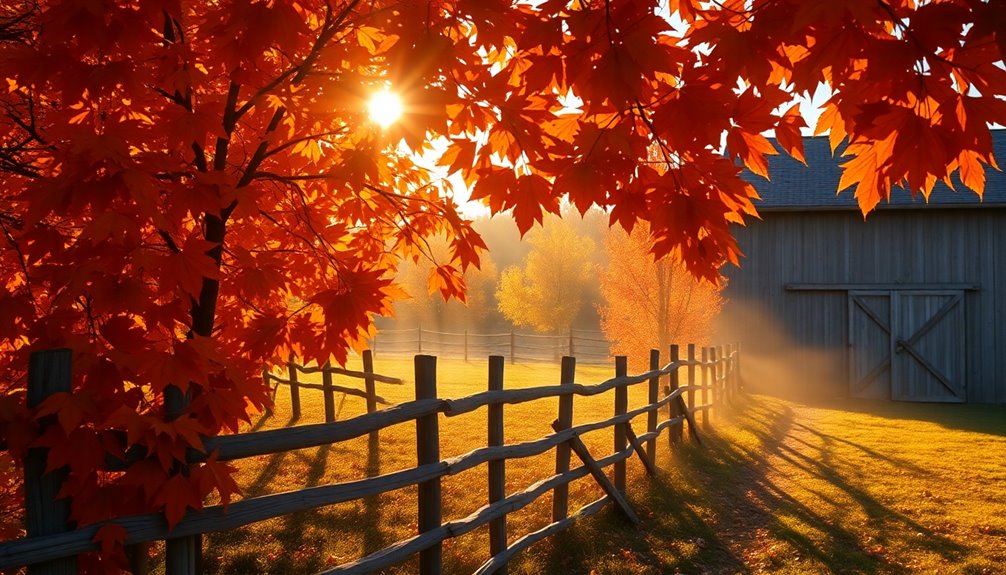
To capture the stunning colors of fall effectively, you need to pay attention to lighting. The golden hour, just after sunrise or before sunset, offers soft, warm light that enhances the vibrant hues of autumn leaves. This time of day creates long shadows and adds depth to your images. Understanding directional lighting is essential, as it impacts the highlights and shadows in your photographs.
Experiment with natural light angles: backlighting illuminates leaves from behind, while sidelighting reveals textures in close-ups. Overcast days can also work well, providing even light and minimizing harsh shadows.
If you're working with artificial lighting, consider high-key and low-key techniques to control the mood. Using reflectors and diffusers can help soften light and fill in shadows, ensuring your photos beautifully capture the essence of fall.
Best Practices for Capturing Foliage
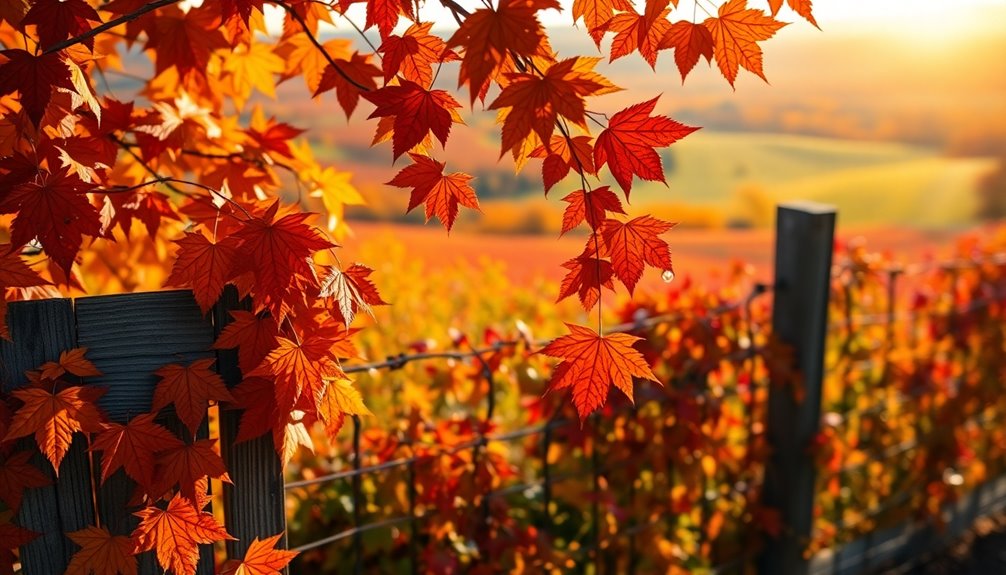
Capturing the vibrant foliage of fall requires more than just great lighting; it also hinges on the right equipment and techniques.
Use a polarizer to enhance colors and reduce glare, while a neutral density filter can help you achieve longer exposures on bright days. For detailed shots, a macro lens is perfect for capturing individual leaves, and a long lens helps compose tight images without unwanted backgrounds. Additionally, using a tripod ensures stability, especially when shooting in low light or with slower shutter speeds.
Stability is key, so don't forget your tripod. Focus on the fine details, like leaf textures and patterns, and change your perspective by shooting up toward the sky.
Finally, explore different conditions, from cloudy days to urban parks, to uncover unique compositions that showcase autumn's beauty.
Ideal Times for Fall Photography
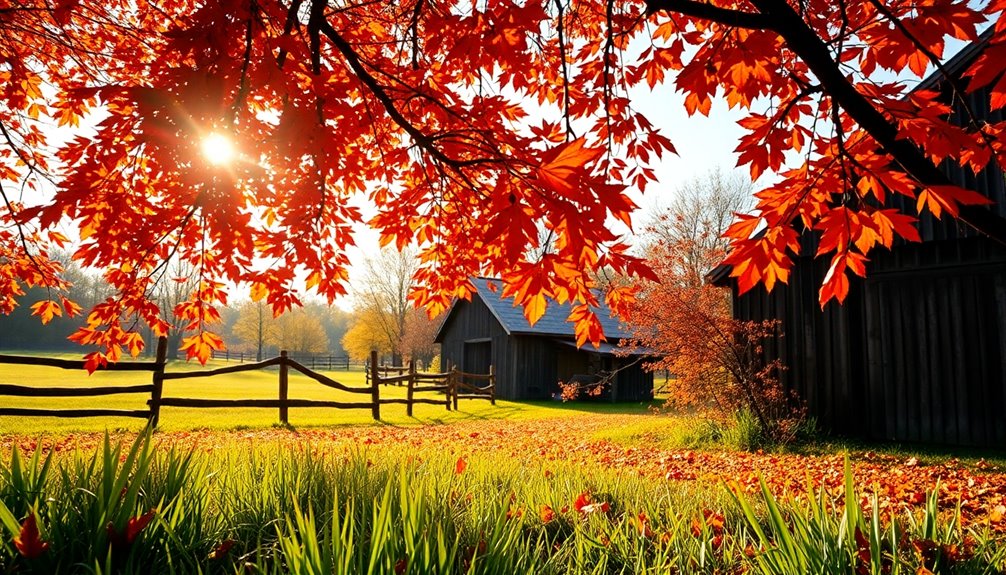
The vibrant hues of fall foliage are best captured during specific times of the year. Typically, early to mid-October marks peak foliage in many regions, like Falmouth, Maine, while the Hudson Valley usually sees its peak around the third week. Monitor local foliage reports for precise timing. Golden hour, just after sunrise or before sunset, provides the warm light that enhances the colors of the leaves, casting long shadows and adding depth to your photos. The unique quality of fall light during this time adds a magical touch to your images. Overcast days can serve as a giant softbox, softening harsh shadows and glare. After rainfall, shiny leaves create extra visual interest. Even early November can offer rich colors from past-peak foliage, making it a magical time for capturing autumn's beauty.
Composition Techniques for Impact
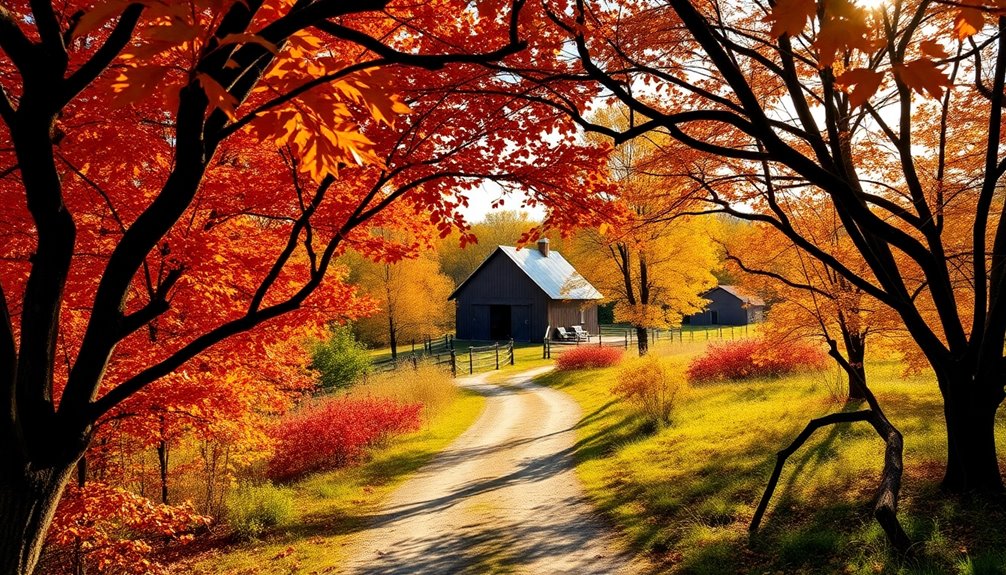
How can you elevate your fall photography with effective composition techniques? Start by using light to enhance your images. Shooting backlit leaves can create a magical glow, while sidelighting brings out complementary colors. Avoid flare by partially shielding the sun behind a tree.
Layer your composition by mixing foreground and background elements; this adds depth and intrigue. Consider using leading lines to guide the viewer's eye and visual anchors for stability. Incorporating patterns and textures will keep your audience engaged—think about tree repetitions or forest floor details. Additionally, understanding coffee brewing techniques can inspire unique and warm compositions, especially if capturing moments of cozy coffee enjoyment amidst the fall scenery.
Lastly, create contrast with bold colors against dark elements. This will make your images pop and convey the dramatic beauty of autumn. Additionally, capturing natural light during early morning or late afternoon can significantly enhance the overall mood of your photographs.
Preparing Your Landscape for Fall
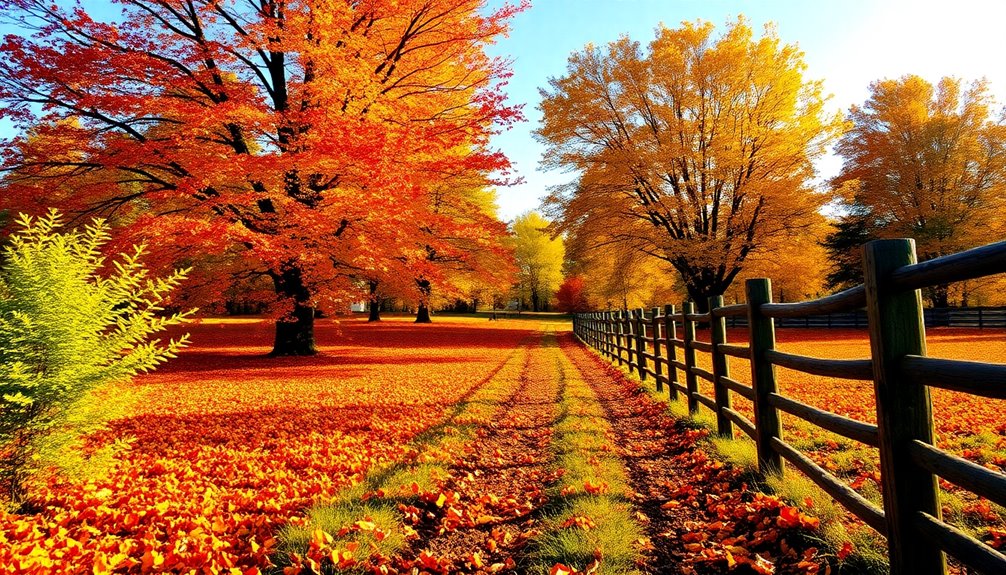
As autumn approaches, your landscape needs a little TLC to prepare for the changing seasons.
Start by clearing garden beds of plant debris and thoroughly weeding to prevent unwanted growth. Add a 2-3 inch layer of compost to enrich the soil, and consider planting cover crops to protect and nourish it. Additionally, be sure to dig up tender bulbs like Cannas before the frost to store them safely.
For trees and shrubs, now's the time to plant and prune any damaged limbs. Mulch around your plants to insulate roots and deter weeds.
In your lawn, rake leaves to keep them off the turf and consider planting grass seed or laying sod. Don't forget to aerate your soil and apply pre-emergent fertilizers to promote deep root growth.
These steps will ensure your landscape thrives through fall and winter.
Leveraging Environmental Conditions
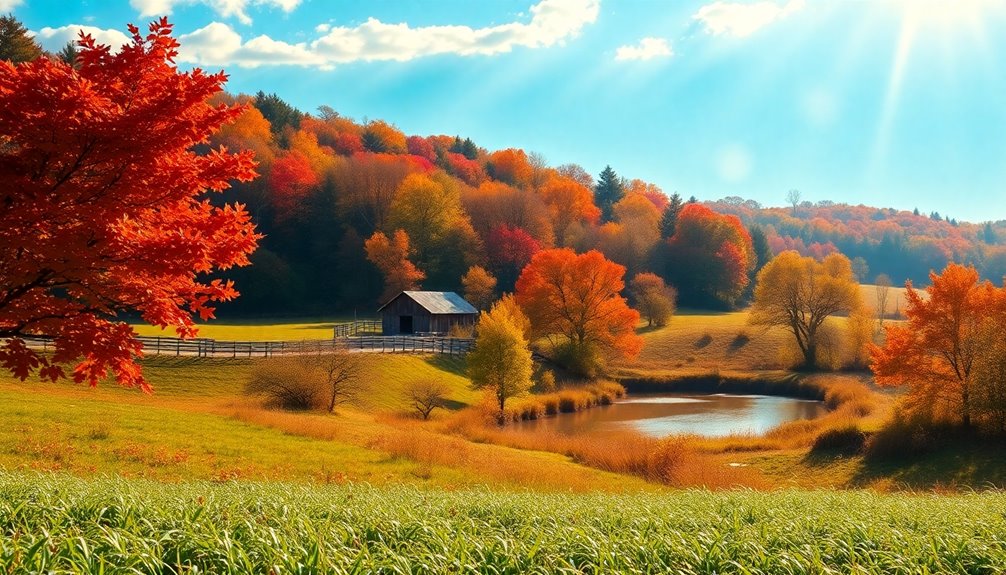
Once your landscape is ready for fall, it's time to capture its beauty by leveraging the environmental conditions that define this season. Aim for that golden hour—those magical moments at sunrise or sunset when soft light enhances the vibrant colors of leaves.
On overcast days, take advantage of the reduced glare to highlight the rich hues against darker backgrounds. Freshwater sucker fish thrive in rivers and lakes, which can be a beautiful backdrop for your fall photography. Early morning mist adds a serene, dreamy quality, perfect for softening colors. Avoid direct sunlight, which can wash out details. Foggy and cloudy conditions can also create a moody atmosphere that enhances depth in your photographs.
Keep an eye on temperature and moisture, as cool nights boost color vibrancy. Use tools like a circular polarizer to reduce glare and a warm white balance to enhance fall colors, ensuring your photos reflect the season's stunning beauty.
Utilizing Different Perspectives
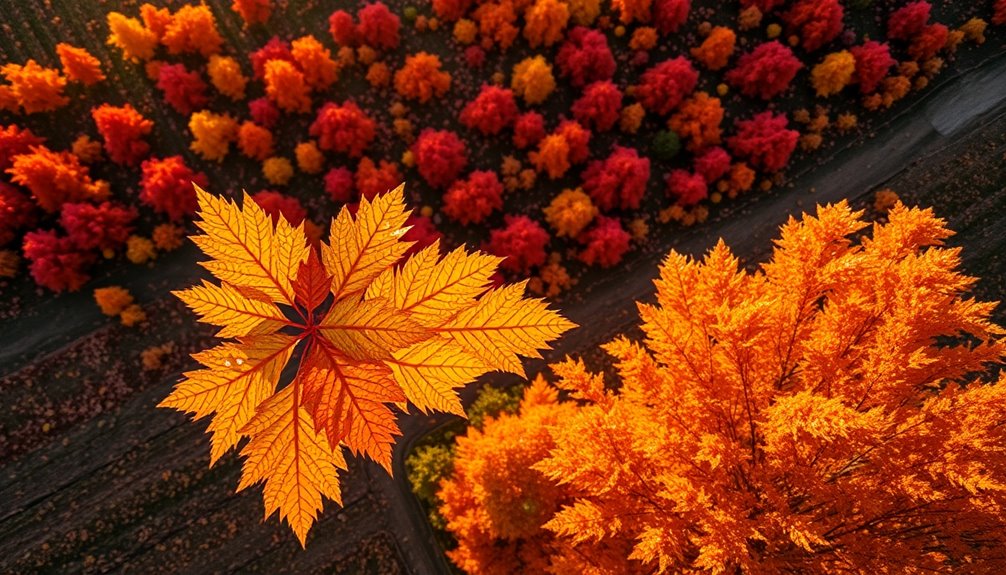
Exploring different perspectives can transform your fall photography from ordinary to extraordinary.
Start by using a tripod for stability; it'll help eliminate blurry images, especially in low light. Position it low to capture unique angles or extend it for sweeping landscapes. Experiment with light angles—backlight can enhance colors, while sidelighting reveals textures. Avoid harsh midday light, opting for soft overcast days instead. Peak foliage typically lasts only a few days to two weeks, making it essential to be ready to capture the best moments.
Reflect on water surfaces for stunning reflections, and look for patterns in contrasting leaf colors or lines of trees.
Don't forget about macro shots; focus on individual leaves, dew droplets, or intricate bark textures.
Enhancing Color With Tree Variety
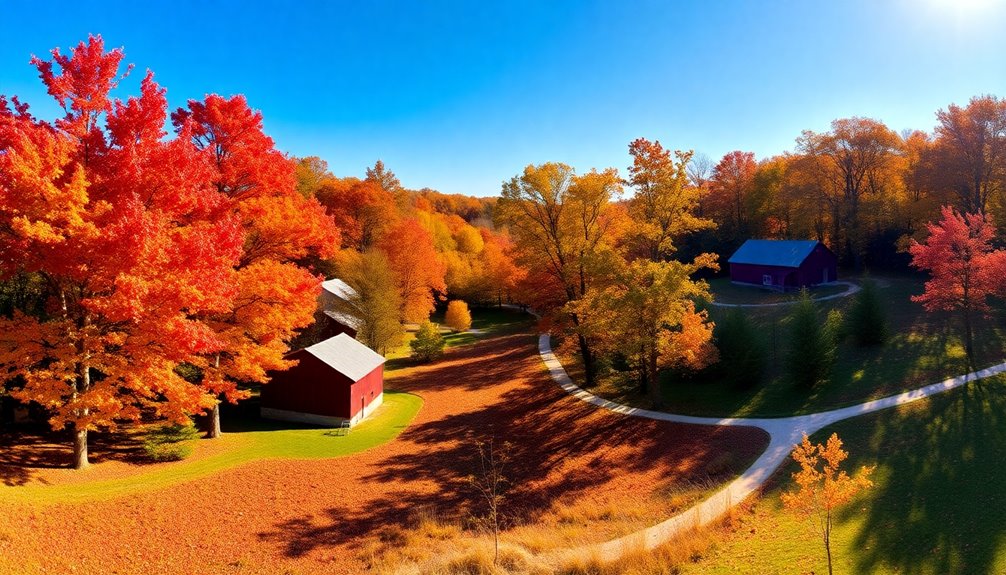
To truly enhance the vibrancy of your fall photography, choosing the right tree varieties is essential.
Consider incorporating Black Tupelo for stunning hues of yellow, orange, and red, or Crape Myrtle for its warm golds and reds. Flowering Pear offers rich purple-like reds, while the Purple Leaf Plum maintains dark reddish-purple foliage year-round. The Black Tupelo is also an important late-spring food source for bees, supporting local wildlife.
Don't overlook Fothergilla, which transforms into dramatic shades of red and orange.
Remember, environmental factors like sunlight exposure and moisture significantly affect color intensity. Ensure your trees are healthy through proper care, as this can amplify their fall displays.
Creative Uses of Movement in Shots
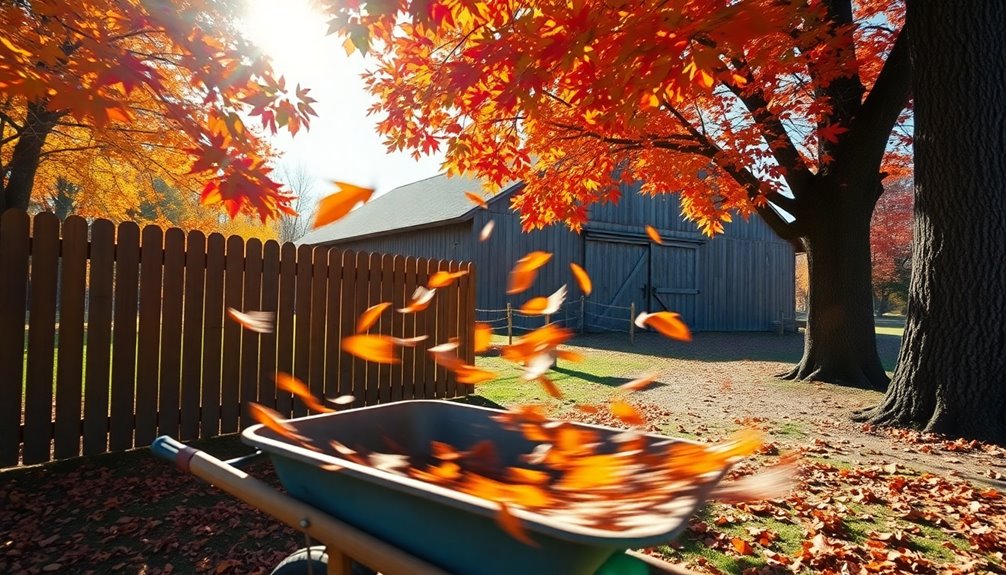
Movement can breathe life into your fall photography, creating dynamic images that capture the season's essence. Use intentional camera movement (ICM) techniques, like adjusting shutter speeds from 1/15th second to several seconds, to achieve stunning blur effects. Understanding movement from start to finish can greatly improve your ability to capture these dynamic shots. Additionally, consider how well-drained soil and full sun can enhance the growth of vibrant autumn foliage in your shots.
Experiment with panning, shaking, or twisting your camera while tracking subjects like trees or buildings for sharp focal points against blurred backgrounds. Play with long exposure and flash to create movement trails without overpowering the scene.
For unique angles, get low to the ground or use ultra-wide-angle lenses to exaggerate perspective. Don't forget to capture reflections in water to enhance the beauty of autumn.
With practice, these techniques will elevate your fall photography to new heights.
Frequently Asked Questions
What Tree Species Offer the Best Fall Color Displays?
If you're looking for vibrant fall colors, consider planting Black Gum, Sugar Maple, or Ginkgo biloba.
The Black Gum showcases a stunning array of reds, oranges, and yellows. Sugar Maples offer rich hues of burnt orange and red, while Ginkgo turns a brilliant yellow.
For a unique twist, the American Sweetgum displays a mix of colors. Each tree not only beautifies your space but also supports local wildlife and enhances your landscape.
How Can I Extend the Fall Color Season on My Farm?
To extend the fall color season on your farm, start by choosing tree varieties known for vibrant colors.
Ensure adequate rainfall and maintain proper soil moisture, especially during summer.
Utilize shade structures to protect younger trees and monitor weather conditions closely.
You can also create wind breaks to shield your trees from harsh winds.
Lastly, regular maintenance, including pruning and fertilization, will keep your trees healthy and improve their fall color display.
What Tools Are Essential for Fall Foliage Photography?
For capturing stunning fall foliage, you'll need essential tools like wide-angle and telephoto lenses to showcase both expansive views and intricate details.
A circular polarizer filter enhances color saturation, while a tripod provides stability for low-light conditions.
Don't forget variable neutral density filters for creative movement effects.
Mastering lighting techniques, like shooting during golden hour, will elevate your images, so make sure you've got the right gear to bring those vibrant colors to life!
How Does Weather Impact Leaf Color Changes Throughout Fall?
Weather plays a crucial role in how leaves change color during fall.
Cool nights and warm days create a vibrant contrast, while adequate sunlight boosts sugar production in leaves, enhancing reds and purples.
If summer conditions are dry, trees might stress and change color prematurely.
Additionally, too much rain or warm fall spells can lead to early leaf drop, impacting the overall display.
Can I Capture Fall Foliage With a Smartphone Camera?
Absolutely, you can capture fall foliage with a smartphone camera!
Start by using burst mode to catch those falling leaves in action. Experiment with Pro mode to tweak colors and exposure settings for the best results.
Change your perspective by shooting from ground level or looking up at the trees. Utilize natural light during golden hour for stunning warm hues, and don't forget to focus on intricate leaf details for added impact.
Conclusion
As you venture out to capture the stunning autumn leaves on your farm, remember to embrace the vibrant colors and unique perspectives around you. Use optimal lighting and consider the environmental conditions to enhance your shots. Experiment with composition and movement to create dynamic images that truly reflect the beauty of fall. With these tips in mind, you'll not only preserve the season's charm but also create lasting memories of your farm in its autumn glory.

